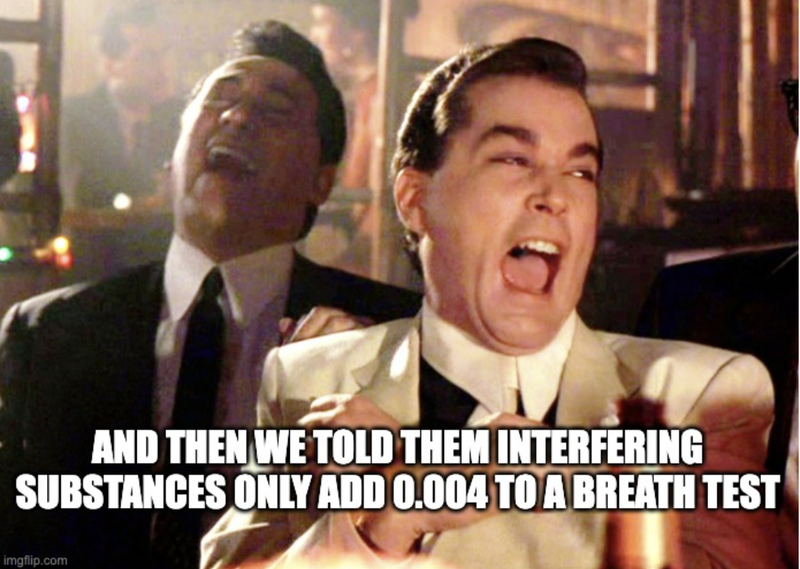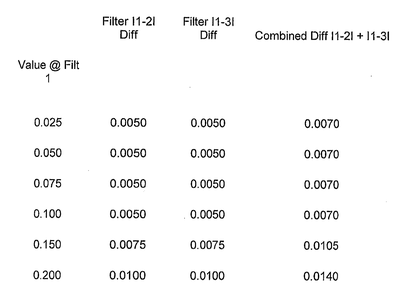BCA Scientists Can't Decide If Interfering Substances Affect a Breath Test

Last week in court, a state breath alcohol “scientist” admitted that normal compounds found in the breath could add as much as 0.004 to the result of a breath alcohol test! The problem is state scientists have been all over the map on this.
Some state scientists have testified that normal compounds on the breath, known as interfering substances, can add as much as 0.02 to a breath test!
Frustrated, I went back to my discovery archives to see if I could find answers.
How much can interfering substances add to a breath test?
When I dug up the original files from the manufacturer, National Patent Analytical Systems (NPAS), I found a very different answer.
The official documentation from NPAS states: “If the difference is ≤ the filter agreement threshold (default 0.005) then the sample is said to be free from an interfering substance.”
See a screenshot from NPAS’s official documents:

What this means is that the DMT breath alcohol machine won’t throw a flag for an interfering substance until it adds more than 0.005 to a breath test.
For example, you could have a breath alcohol of 0.075, but due to having gone on a ketogenic diet, you might get a 0.080 — which puts you over the legal limit, makes you a criminal, and causes you to lose your license.
Even the State’s own DMT breath alcohol training manual admits this. On page 9 of the DMT Operator manual, it states:
“While acetone is not an alcohol, acetone vapors may be present in the breath of diabetics, dieters or highly exercised individuals.”
But the story gets worse.
According to NPAS’s original documents, there are some situations where compounds can add up to 0.007 (or more) to a breath test.
The DMT has 3 different filters, which it uses to look at interfering substances on a person’s breath. In addition to looking at the difference between any single filter, the breath machine also looks at the combined differences between the DMT’s filters.
In some situations, the machine won’t flag until the combined difference adds up to 0.007! And at higher concentrations, the difference required to flag increases.
Take a look at the table by NPAS below (see the combined Diff column).

We need answers to critical questions
The question that needs to be answered is, "How much can these interfering substances add to a breath alcohol reading before the machine flags them?"
It seems that the state doesn’t even know the answer to this question.
Recently, the state even redid its procedure for acetone testing. This was a tacit admission that they don't quite know how the DMT analyzes these substances.
The problem with infrared breath testing is that normal substances (like acetone and isopropanol) can be on a person's breath after exercising, when on a low-carb diet, or after fasting. These substances can then push a driver's breath alcohol over the legal limit due to no fault of their own.
If you’ve been a victim of the state’s inadequate breath alcohol machines, call Ramsay Law. We know the science and the law. We dig deep into the science to get you results.
Keep up with the latest DWI science from Ramsay Law — subscribe to our newsletter.

